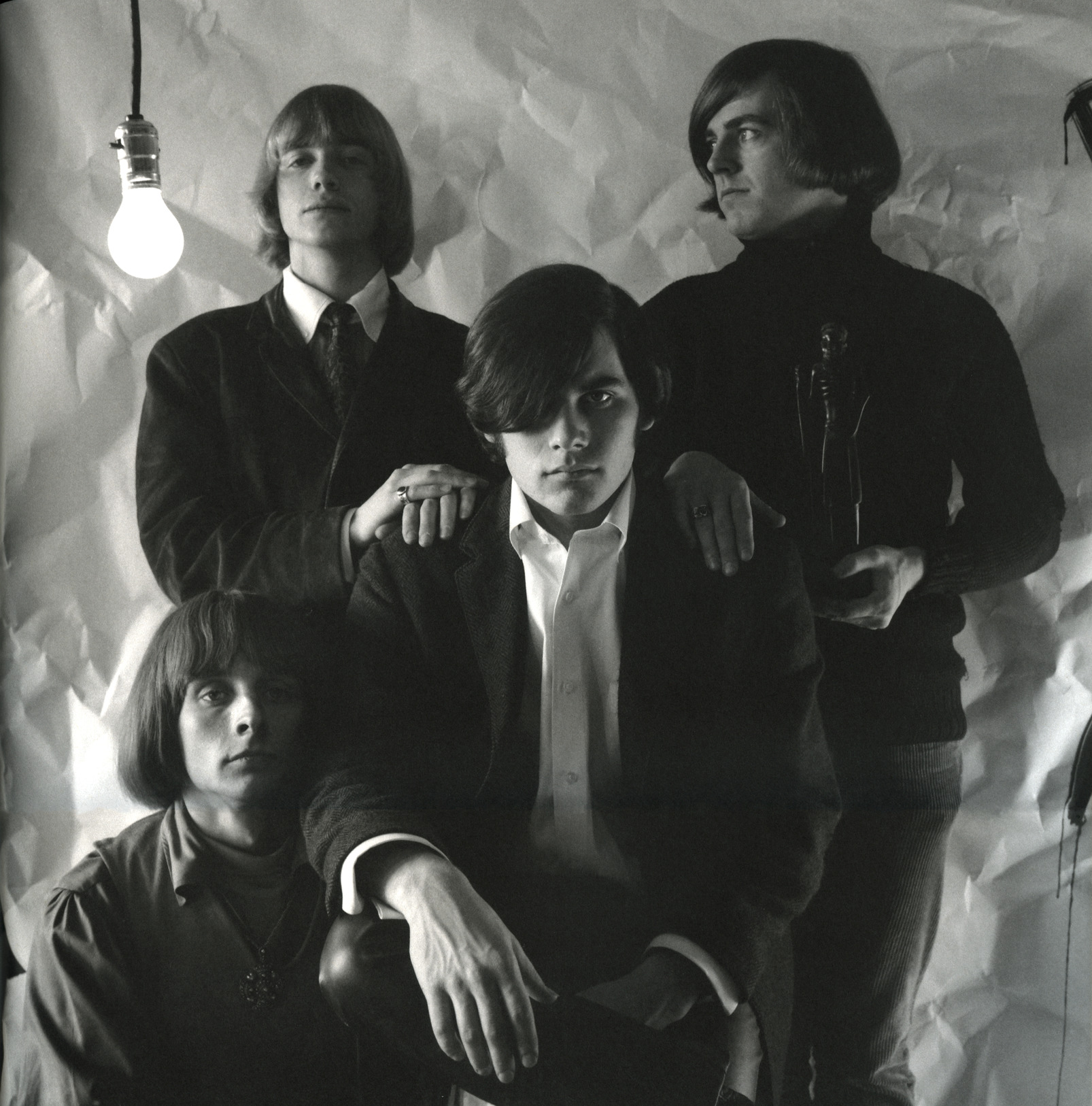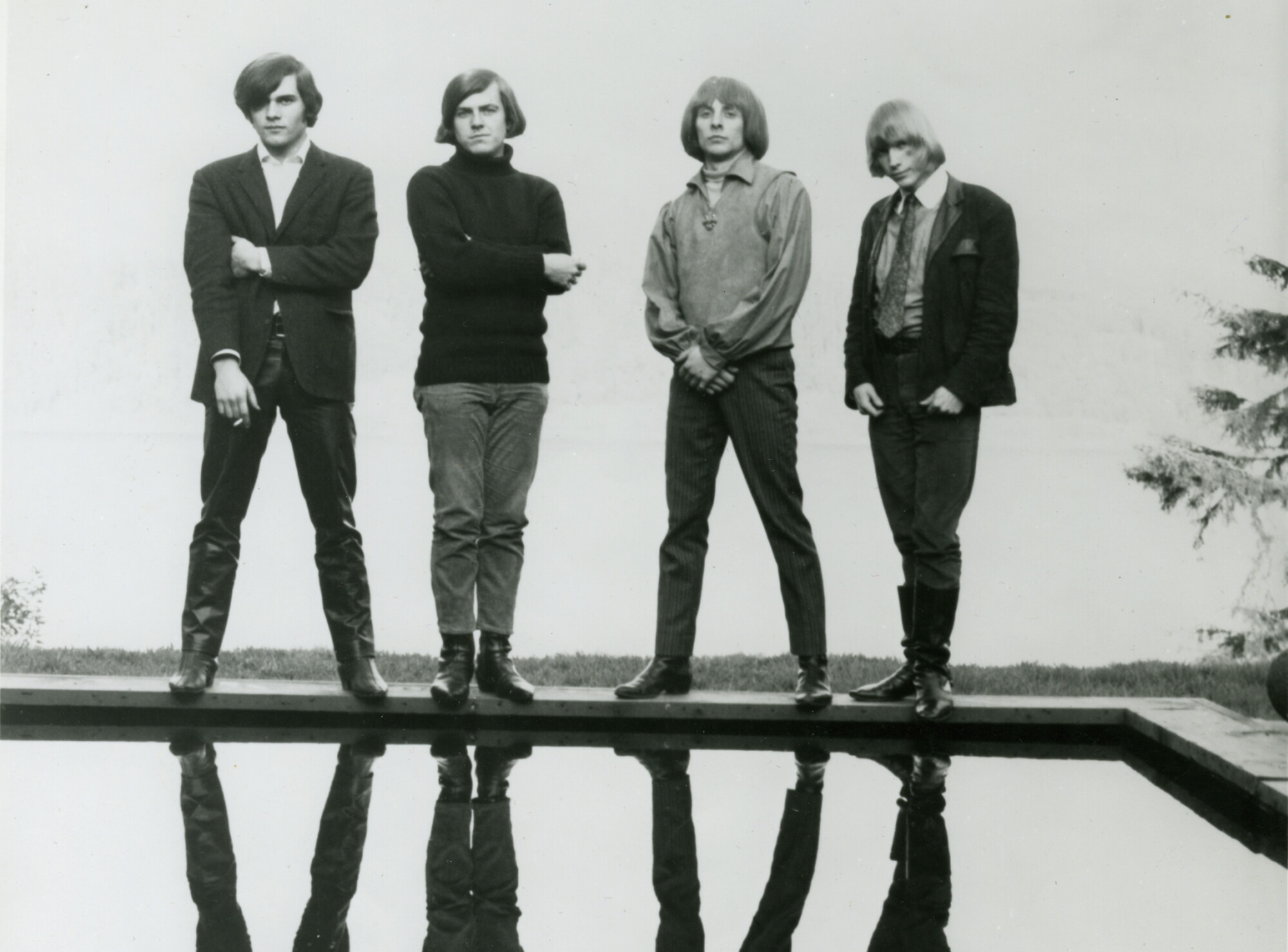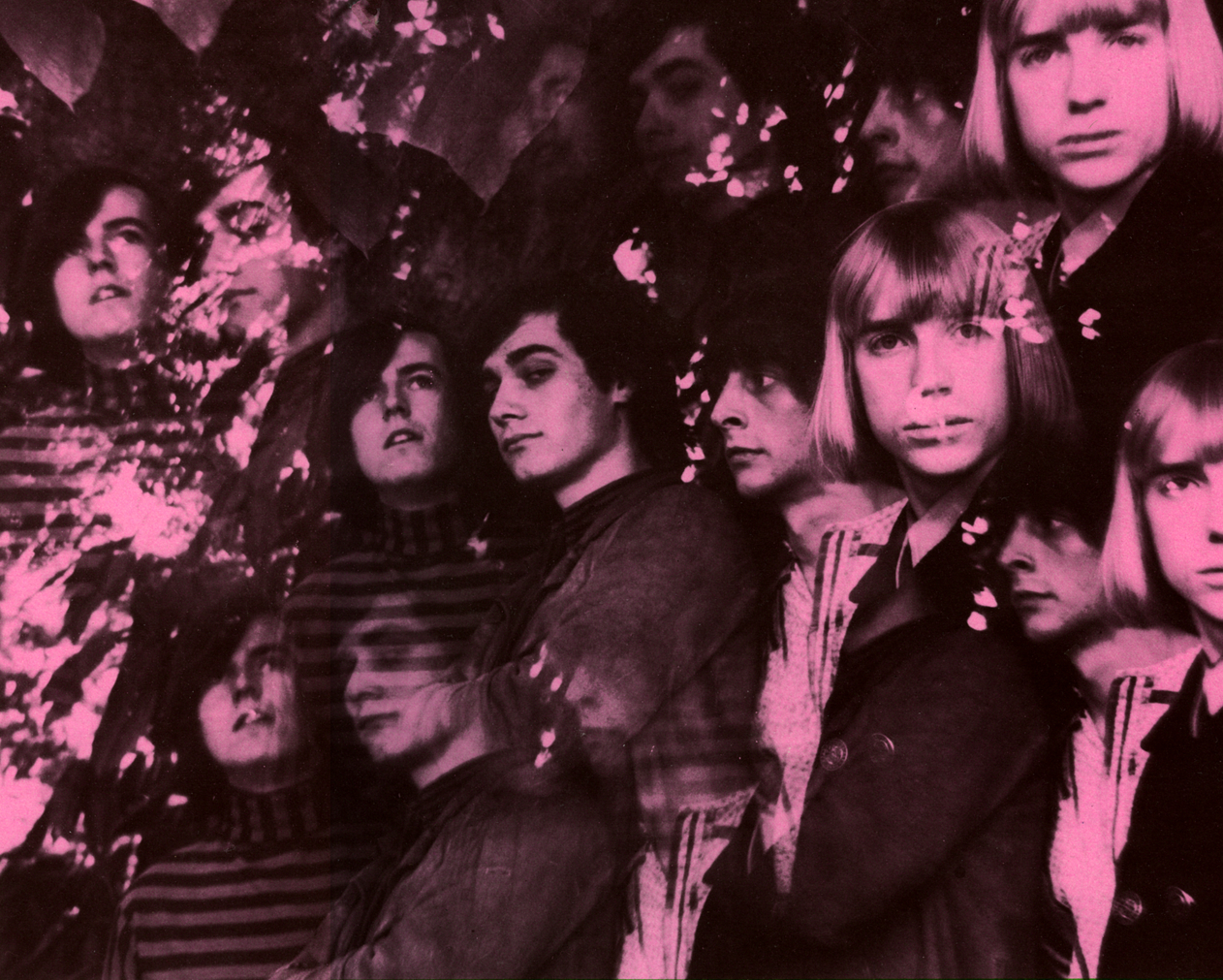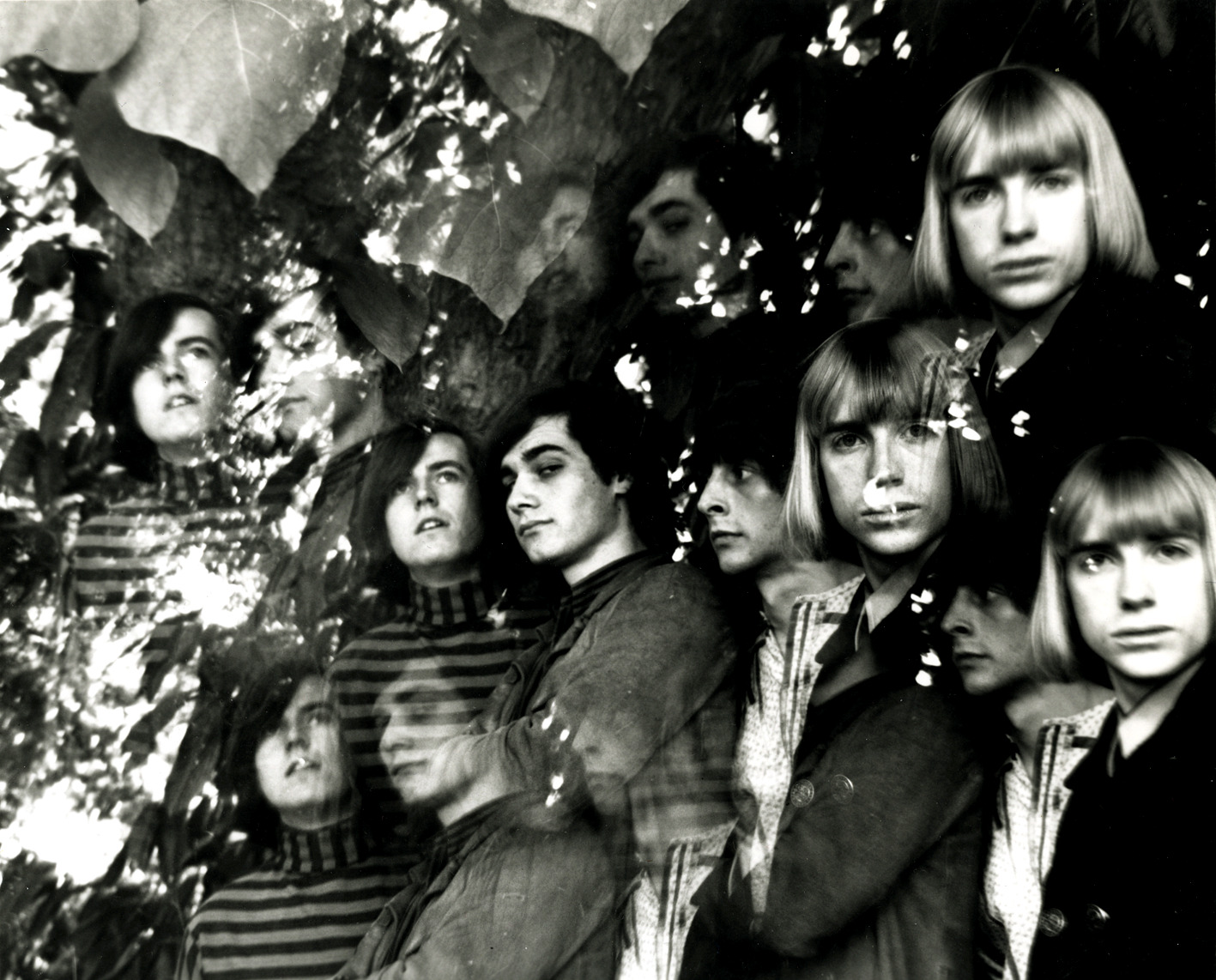The Daily Flash | Interview | The Legendary Recordings 1965-1967
Seattle’s first “alternative” band from the 60s, The Daily Flash were caught in the psychedelic explosion of the West Coast with their electrifying blend of folk-rock, pop, blues and jazz.
‘The Legendary Recordings 1965-1967’ recently issued by Guerssen is the most comprehensive compilation that includes 45s ‘Jack Of Diamonds’ of Nuggets fame, ‘Queen Jane Approximately,’ ‘The French Girl’… plus unreleased studio / live recordings and rare demos / acetates.

“The group were renegade, playing across several styles”
When did you record ‘Queen Jane Approximately’ / ‘Jack of Diamonds’.
Jon Keliehor: During the time local promoter Ron Saul saw the group perform at a coffee house in Seattle known as The Door, he was confident he could find a label that would take the group. The group decided to record ‘Queen Jane Approximately,’ along with the song ‘Birdses’, and a session was booked at Kearney Barton Studios, Seattle. A demo was sent to London Records. On the strength of Queen Jane Approximately, Saul negotiated the release for the group’s first single on London (Parrot) Records.
Ron Saul had seen his role as quite limited, yet when Los Angeles managers Greene and Stone heard the demo, they signed the group immediately and negotiated with London Records to re-release the music in the US, yet with a better B-side. Ron Saul stepped away quickly and graciously. The tune ‘Birdses’ was shelved and the group decided to replace it with music they had experimented with and incorporated in performances.
I had recently come from two and a half years working with another Seattle group, The Frantics, and suggested we consider music based on the energy of a recording known variously as ‘The Cooker’ or ‘San Francisco Swim’ (recorded on Dolton). I suggested an intro with guitar feedback and a long-building drum roll. The Daily Flash loved the idea. The blues structure was adopted into ‘Jack of Diamonds’. Steve Lalor was eager to sing and play harmonica. Doug Hasting wanted to dip into NW blues guitar ideas from heroes such as Rich Dangel and Joe Johansen. ‘Jack of Diamonds’ could have been further inspired in part by music from The Yardbirds. This would also have been a further measure of validation for us.
‘Queen Jane Approximately’ (version one)
(Bob Dylan)
Warner Brothers Music Date: Jan 1966
Location: Kearny Barton Studios, Seattle
Musicians: Steve Lalor, Don MacAllister, Doug Hastings, Jon Keliehor
‘Birdses’
(Dino Valenti) Date: Jan 1966
Location: Kearny Barton Studios, Seattle
Musicians: Steve Lalor, Don MacAllister, Doug Hastings, Jon Keliehor
‘Jack of Diamonds’
(Traditional – arr by Lalor, Keliehor, MacAllister, Hastings) Additional words by Jan Tissot
Intersong Music Ltd (Warner Chappell Music) Date: Feb 1966
Location: Wiley/Griffith Studios, Tacoma
Musicians: Steve Lalor, Don MacAllister, Doug Hastings, Jon Keliehor
Gold Star studios: Record
‘Queen Jane Approximately’ (version two)
(Bob Dylan)
Warner Brothers Music Date: June 1966
Location: Gold Star Studios, Los Angeles, Studio B, 6262 Santa Monica Boulevard, Hollywood Musicians: Steve Lalor, Don MacAllister, Doug Hastings, Jon Keliehor
Additional: This new version of Bob Dylan’s ‘Queen Jane Approximately’ is recorded because Greene and Stone felt that our early version of the song recorded in Seattle wasn’t sufficiently bright to become a competitive release, so they asking us to recut it.
I’ve described these events previously:
“Lalor had picked up this song from Billy Roberts who got it from an old black street singer in New Orleans who called himself ‘Perthee’.” Jon Keliehor recalls: “I knew that Doug was a fan of [guitarist] Joe Johansen (my former bandmate in the Frantics), so I suggested that we try to develop a recording around ideas of the Frantics’ ‘San Francisco Swim,’ and adding feedback.
“Steve suggested the lyrics of the traditional ‘Jack of Diamonds’ with additional lyrics by Jan Tissot. Add to that my suggestion of opening with feedback and bringing the tempo up to speed, and we went for that Northwest R&B sound. This immensely compelling music was a standout, a live studio performance that has attracted the attention of new fans over the years, From a time expanding drum build-up in the intro, the song features a riveting guitar solo by Doug as well as a commanding vocal and mouth harp work from Steve. It’s a raw recording. Doug, looking for a nastier guitar sound than his Gibson could provide, switches over to a Montgomery Ward Airline guitar, a remnant from Lalor’s first rock band The 1958 Thunderbolts of Glen Falls.”
How would you describe the local scene there?
In 1965, the “music scene” in America was often conservative yet diverse, similar throughout many regions. University students had access to international touring artists like Ravi Shankar, and the general public to Broadway musicals, ballet and orchestras. Additionally Black R&B clubs were active, and White Teen Dance clubs focused on original, local R&R/R&B bands. A folk scene in the University District brought musicians, poets, beatniks who performed evenings and sat around in coffee shops during the day. Seattle had Jazz clubs, top quality Symphony Orchestras, Opera, Ballet, etc, and radio stations were starting to widen their scope with emerging British rock groups. I studied music at University, played in the Seattle Symphony, with several jazz groups and joined a R&B club band called The Frantics, that owing to my injury from a car accident, the band found a new drummer. Steve Lalor and Don MacAllister found me recuperating. We talked about making new music. We located Doug Hastings, rehearsed here and there, and continued to meet at coffee houses in the University District. News of a psychedelic underground in San Francisco began to filter northward. Brave new ‘explorers’ (consciousness-pioneers) soon arrived in Seattle whereupon the University area became a gathering place for an emerging youth culture that included university students, as well as those who hadn’t figured out what they wanted to do. Here, musicians wanted something different; police wanted to keep abreast of it all; artists wanted to design it all; journalists wanted to publish information on it all; rich fraternity boys wanted to chop-off longhair from freaky menfolk, grab the girls and run. Despite all that there were few venues that wanted longhaired musicians, certainly not weird mixed-music groups such as The Daily Flash. Finally, The Daily Flash decided to create a series of moveable venues in Labor Union halls, and Blaise LeWark opened Seattle’s BFD club.

Would love to hear the story of how Bodine got together and the 1969 album?
This is a story for another time. Yet briefly, a sequence of events came into place just after my quitting The Daily Flash in June 1967. While the Daily Flash itself was essentially beginning to fall apart, I remained in Los Angeles, looking to pick up the pieces and move forward again. Bassist Kerry Magness (played with Seattle’s Kingsmen) came along, and we took a house together in Laurel Canyon, very close to Elektra Record boss Paul Rothchild. Living only a street away from Rothchild, it was perhaps a little audacious of us to walk to his door suggesting a meeting. Yet a bond was formed that eventually led to Bodine. Soon Paul asked us to a Doors recording session, and also sent me to Portland to play a gig with The Doors when John Densmore could’t make it. Paul offered the opportunity to co-form the group Rhinoceros, yet a different idea started to take shape. Kerry (the giant at 6’ 7”) and I moved to San Francisco and Eric Karl, Steve Lalor and David Brooks joined us. Rehearsing in an old factory, the band Bodine began writing new material. There was time to kill. It was a waiting game.

Looking back, what was the highlight of your time in the band? Which songs are you most proud of? Where and when was your most memorable gig?
Performing with a little known band usually involves a lot of travel, locating the venue, setting-up, waiting around, performing, waiting around, packing up, wondering what really happened … finally sleep and repeat.
With The Daily Flash there were several highly memorable adventures, such as being completely taken aback with the roaring sound the group made at a small, high-ceiling church known as the BFD club in Seattle. Most venues had some sort of PA. This one didn’t, so we hurriedly acquired a powerful Hi-fi amp, speakers, plus 2-3 microphones for voices and drums. With clear vocals we turned up the amps.
One memorable gig occurred at the Whiskey a Go-Go in Hollywood, when we suddenly realised that we were performing somewhat better than the Byrds; and another occasion came on arriving in New York to play a month at Ondine Club, and discovering that our managers had ordered quite expensive, fashionable London clothes for the group.
The strangest event was in Vancouver, British Columbia, when three of us slipped some LSD at a Grateful Dead festival. The bass player, Don, had travelled separately, therefore escaping the fantasy journey the three of us were on. Don successfully led the band, yet he had to perform behind a curtain to avoid being spotted by police owing to the fact that he’d entered Canada illegally …. and in disguise to boot.
The group were renegade, playing across several styles. Diverse music pushed the boat out for all of us. For myself the more enjoyable playing experiences were on pieces like “Jack of Diamonds”, and several jazz pieces we used in order to experiment and develop technique with. This is a side of the band rarely talked about, but came about quite early on when I recommended we learn Herbie Hancock’s ‘Cantaloupe Isle’. Soon came Cannonball Adderley’s ‘Tengo Tango,’ Grachan Moncur’s ‘Air Raid’ and Chico Hamilton’s ‘Lady Gabor’. I think it told me that the group I was performing with were people with many skills, eager to learn more.

Listening today, what runs through your mind hearing the Guerssen reissue?
Preparing these notes and remastering this music has been such a privilege. Very little of the group’s output has survived and I’m still trying to locate recordings made by the group. Other than what Steve and I had collected, by 1984 there was no central location for existing music sources. Malcolm Galloway at Psycho Records, Margate, Kent began pestering Bob Jenniker at Seattle’s Park Avenue Records with “Can you send me music please?” Eventually we found a few demos that had been held by Gold Star Studios, but tossed in the trash when the studio shut its doors, and then rescued by a stranger (Gordon Skene). Some recordings only existed on acetate. Our version of ‘Birdses’ was one. Some of the music came unmixed, fragments of performances from studios and at gigs. Owing to the enthusiasm and keen ears of British musician-producers such as Malcolm Galloway, Alec Palao, Richard Allen, as well as Rick Chin, Lars Nefzger in Seattle and myself, many pieces were transferred to digital where we could begin looking for ways to reveal what was natural about the music, while trying to avoid artificial enhancements. Now we have the vinyl master made by Javier Roldón, Vacuum Mastering, Zaragoza, Espana.
The original Daily Flash members had dispersed and went separate ways. Since then there has only been the odd interview to gather information from. With a huge effort by Bruno Ceriotti, many dates of various events have been resourced, and information not previously talked about yet has surfaced revealing a host of details.
Klemen Breznikar
Headline photo: The Daily Flash promotional photo
Guerssen Official Website / Facebook / Instagram / Twitter / Bandcamp / YouTube




